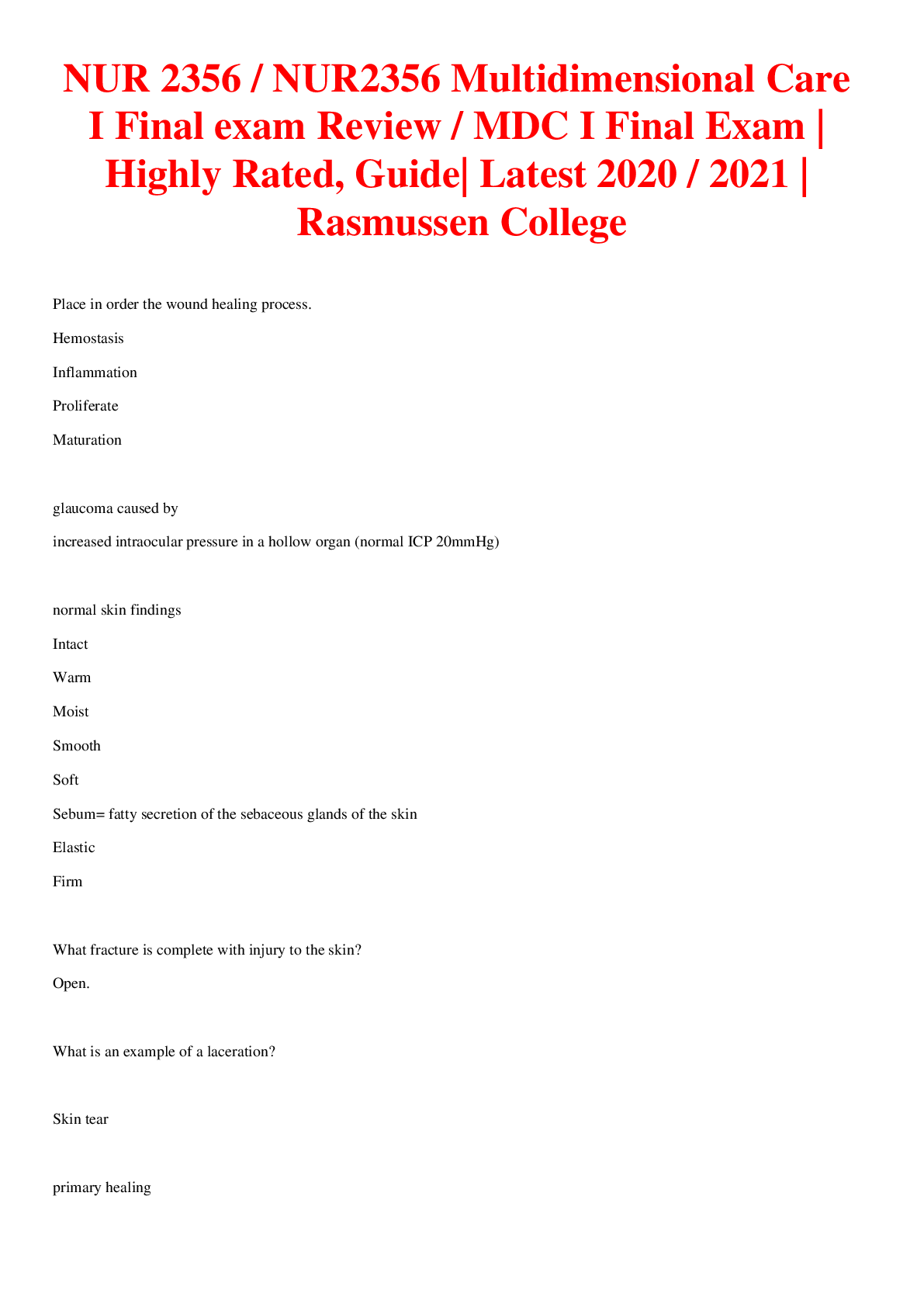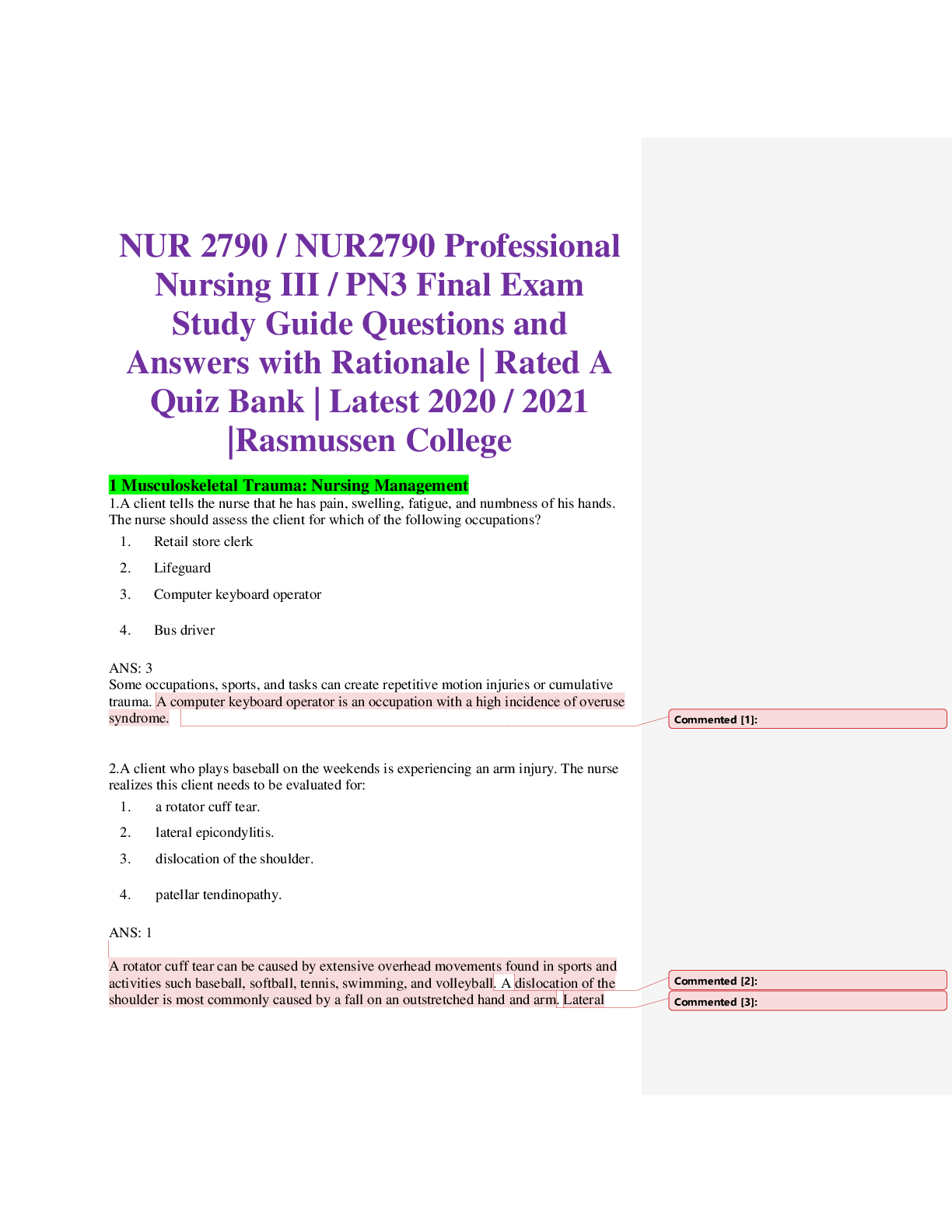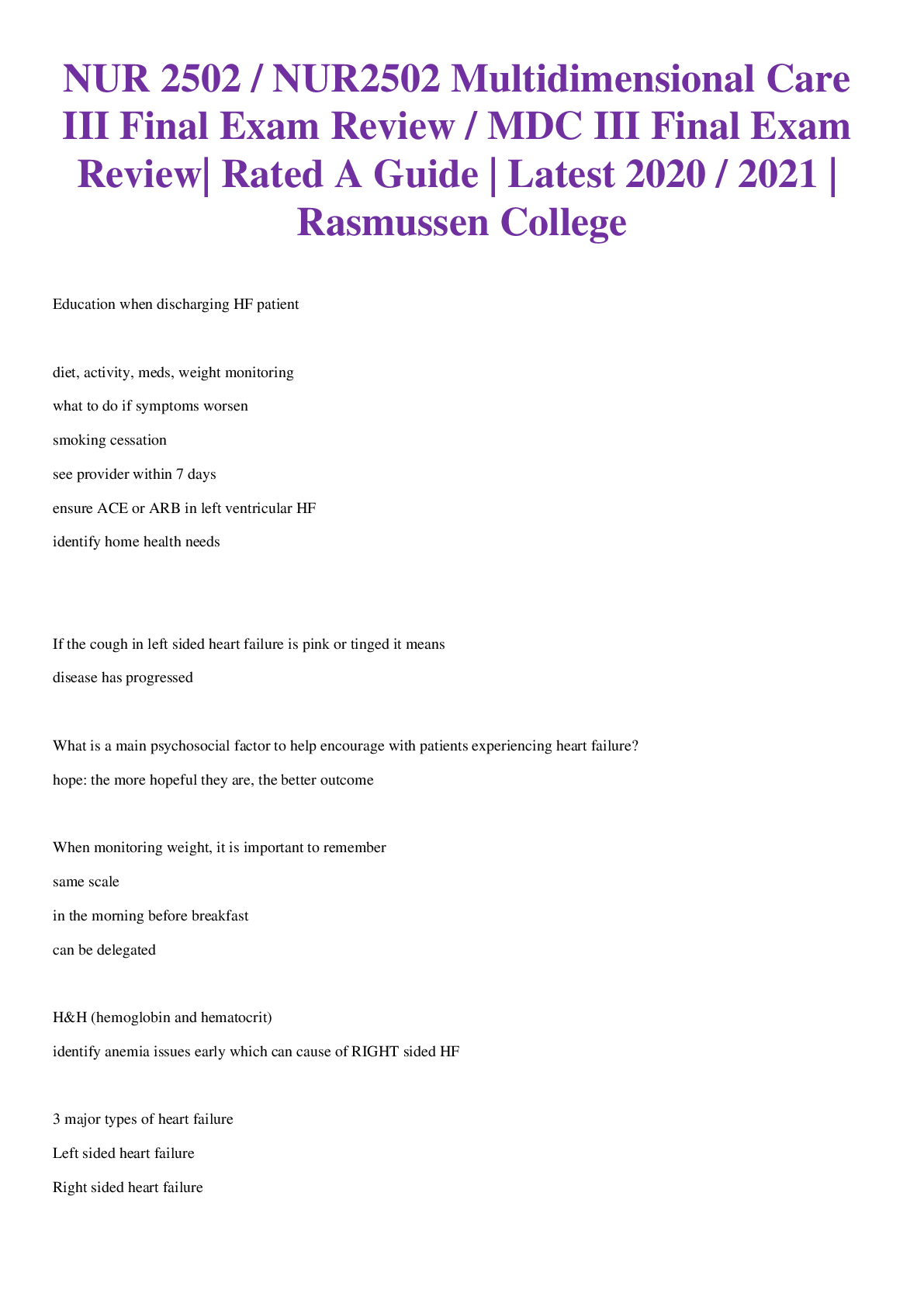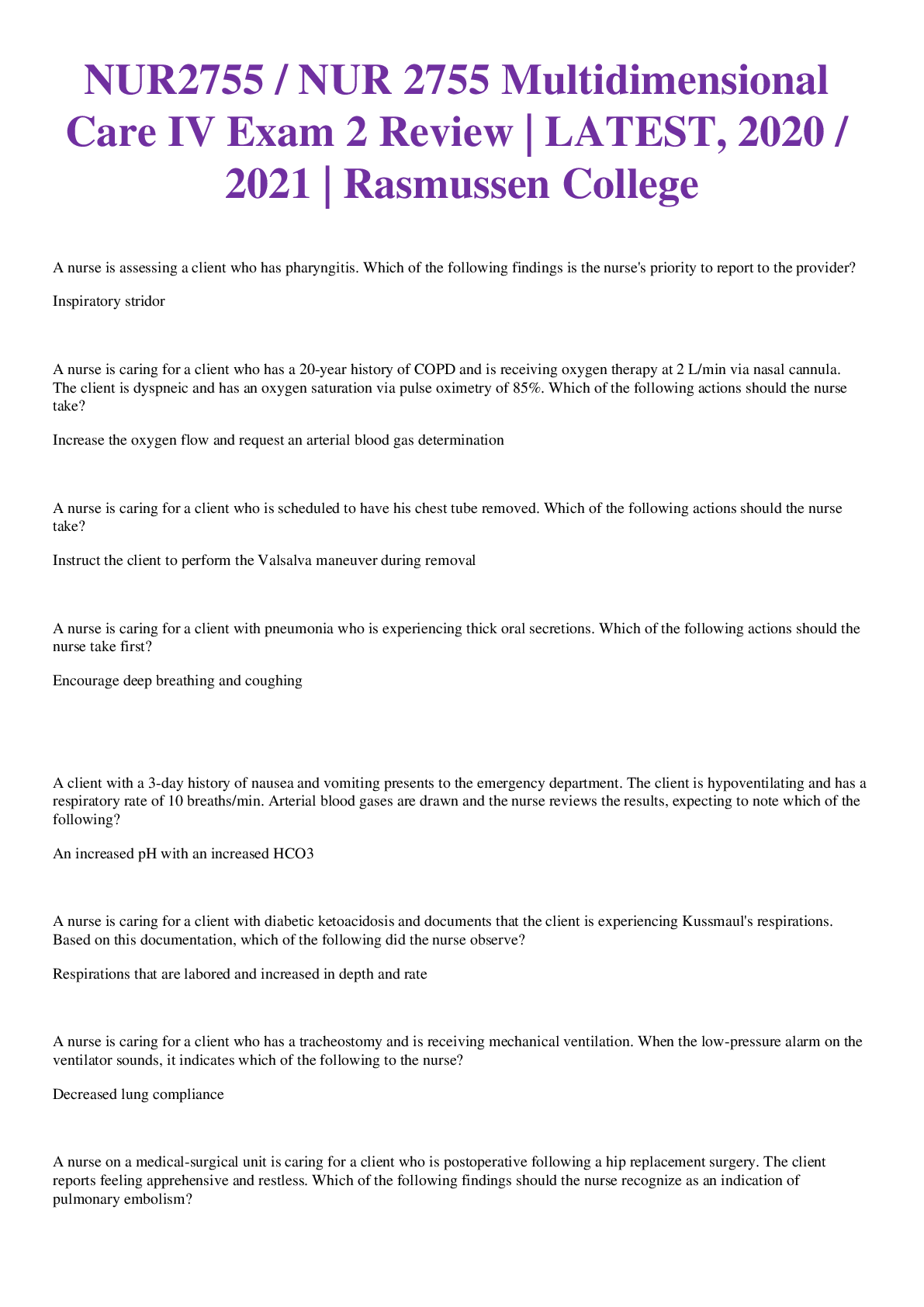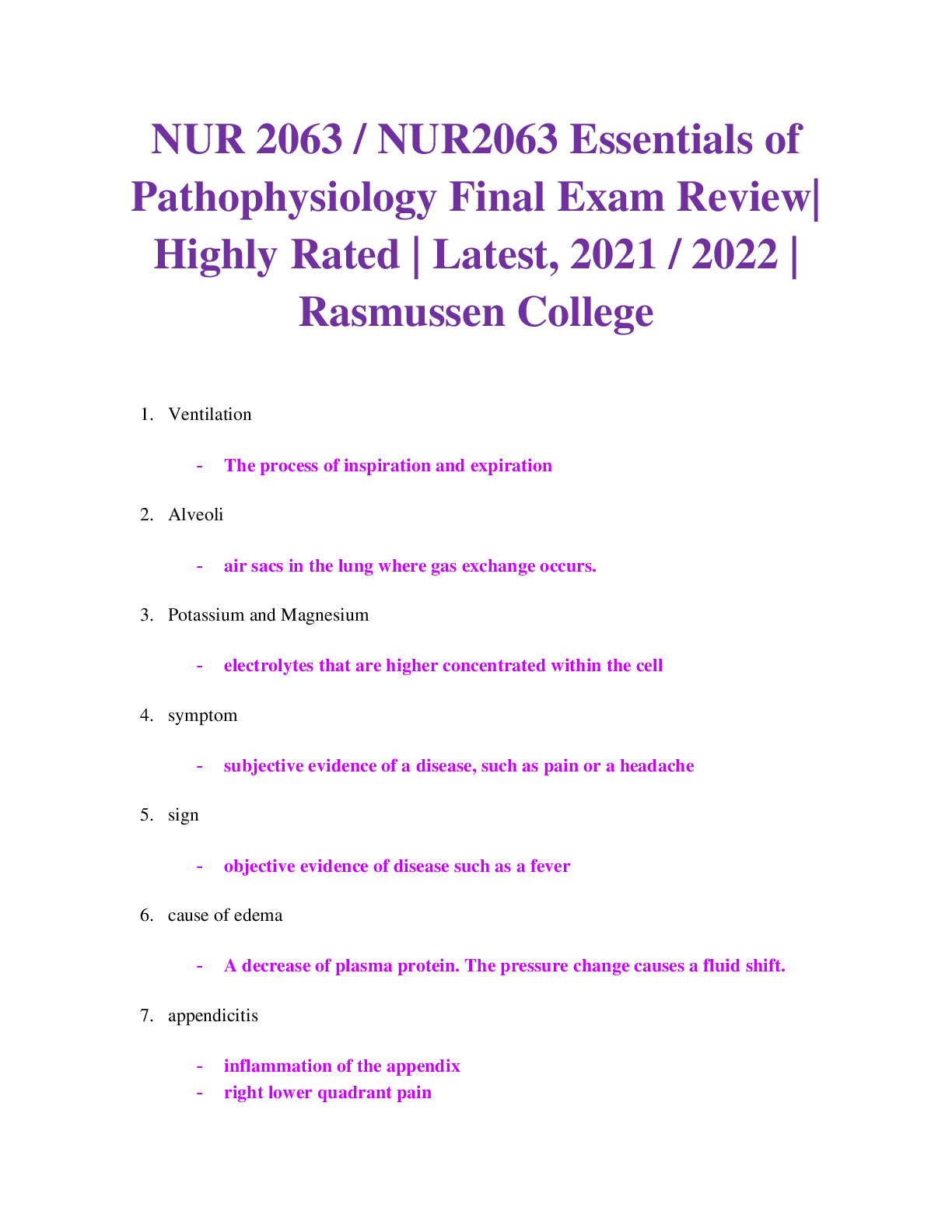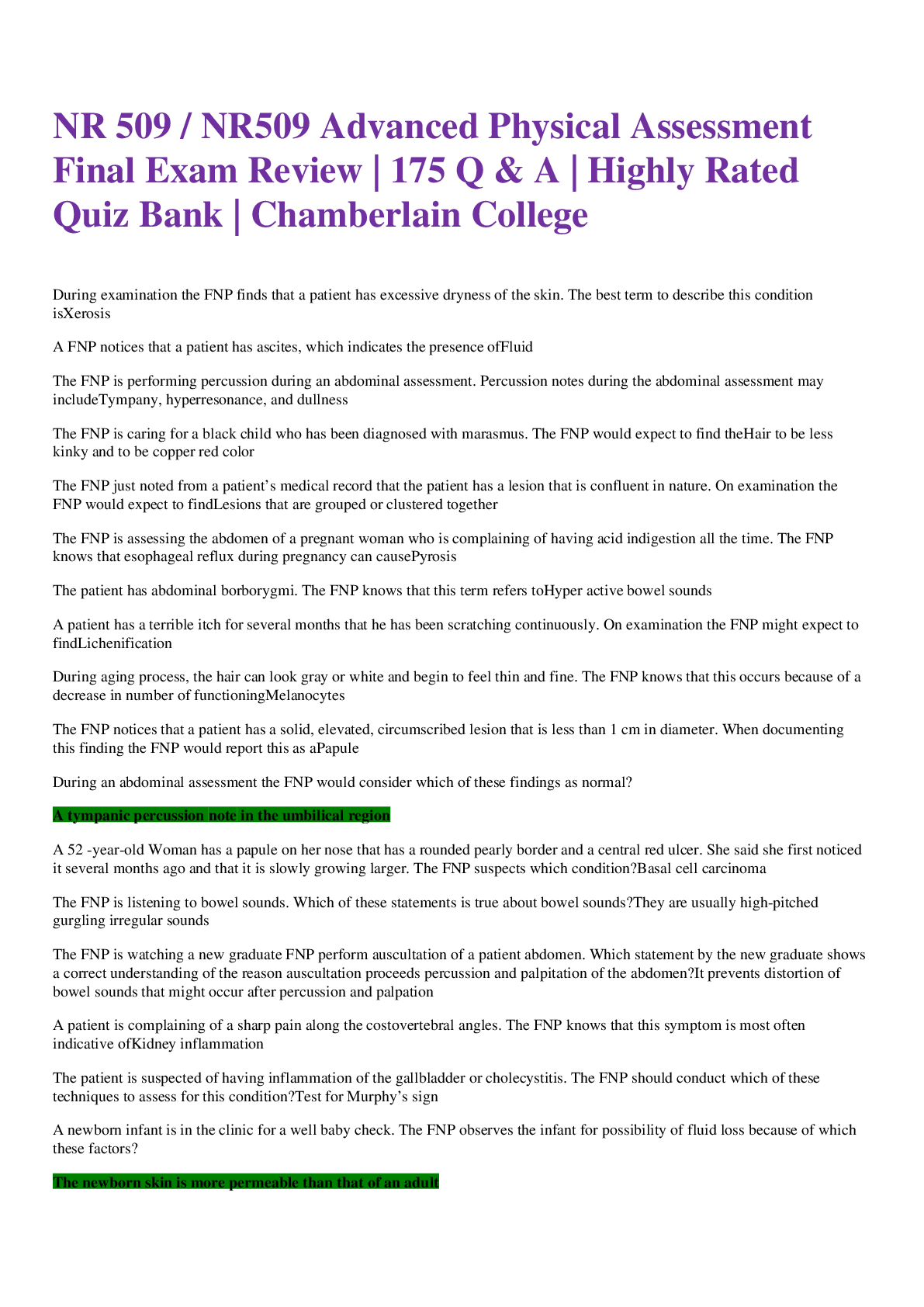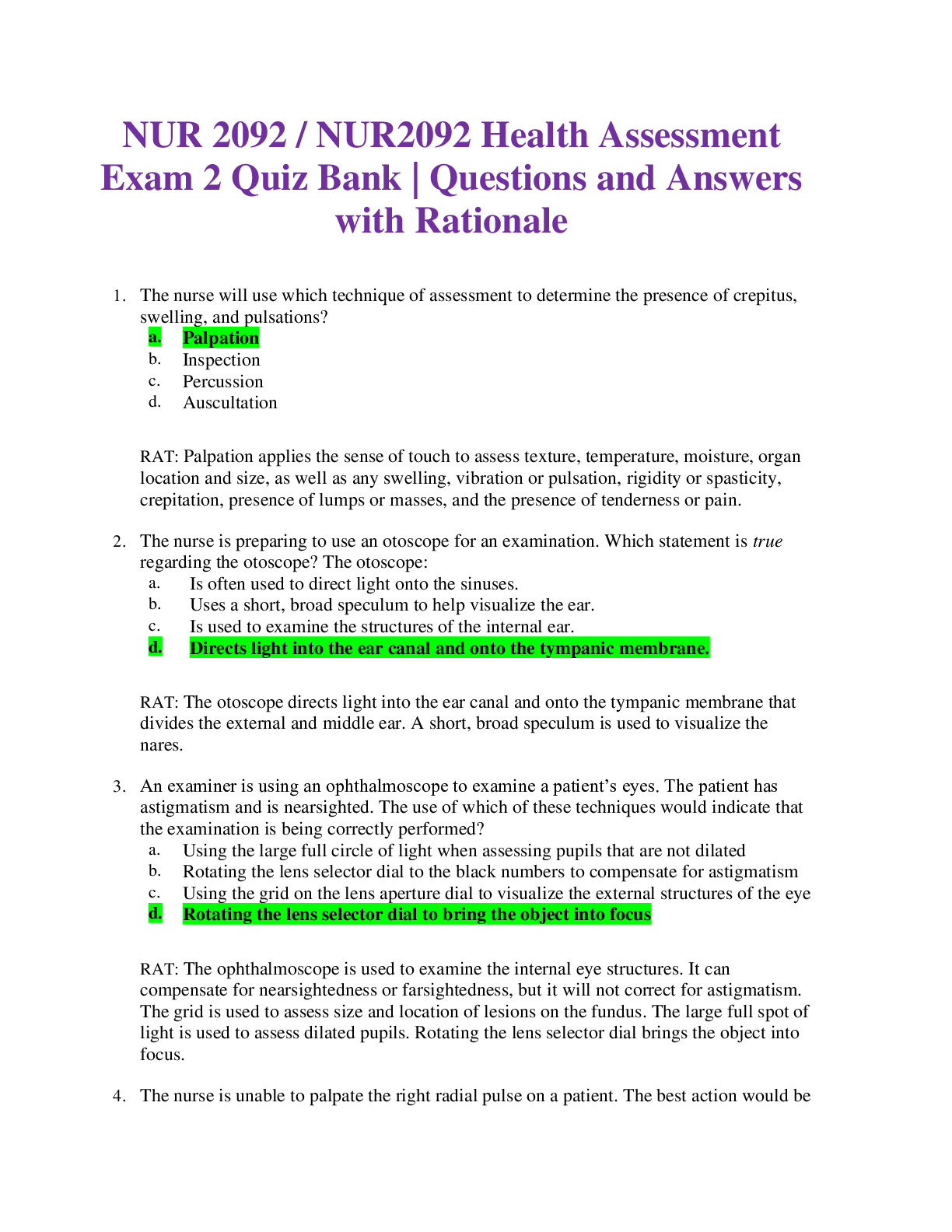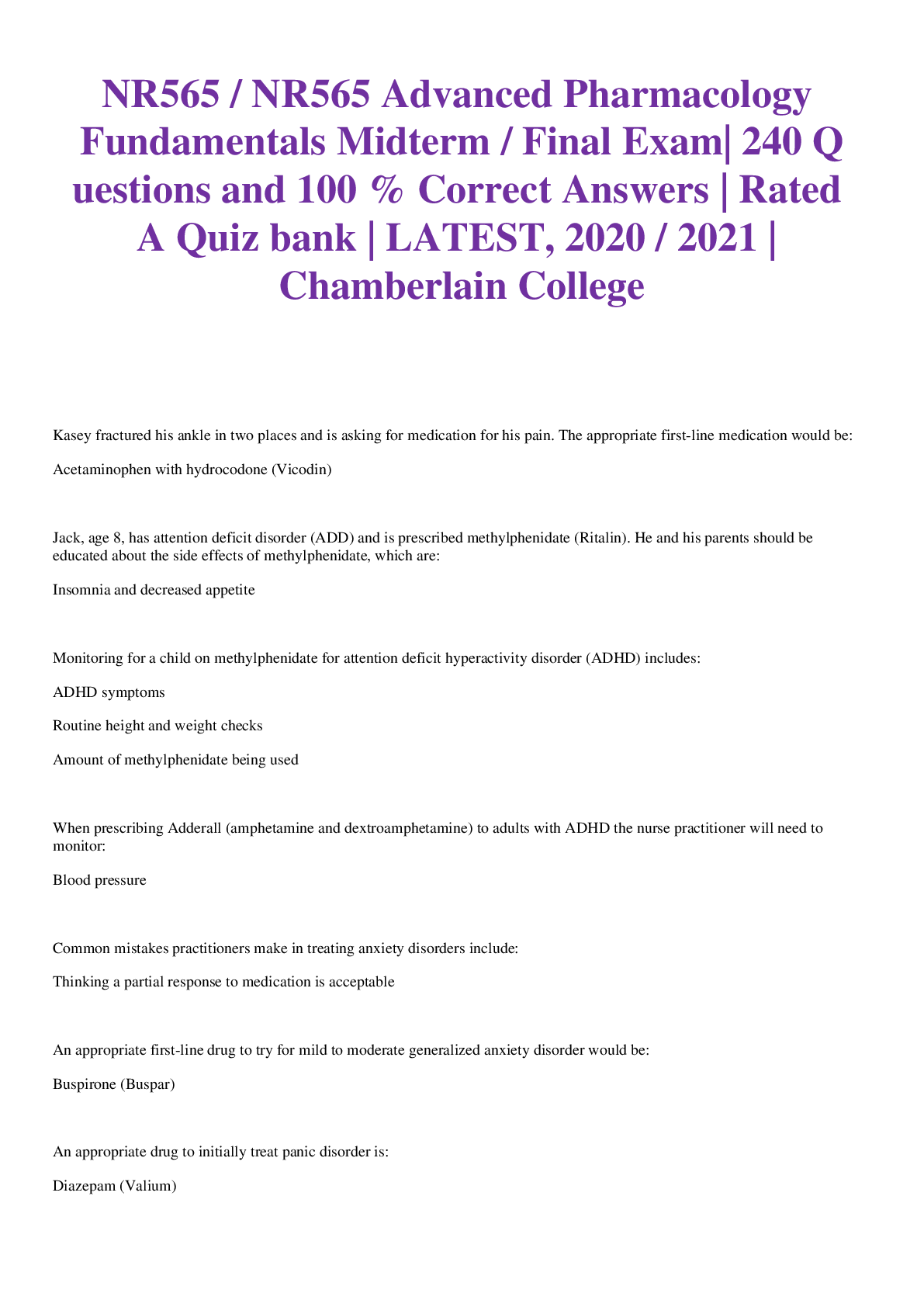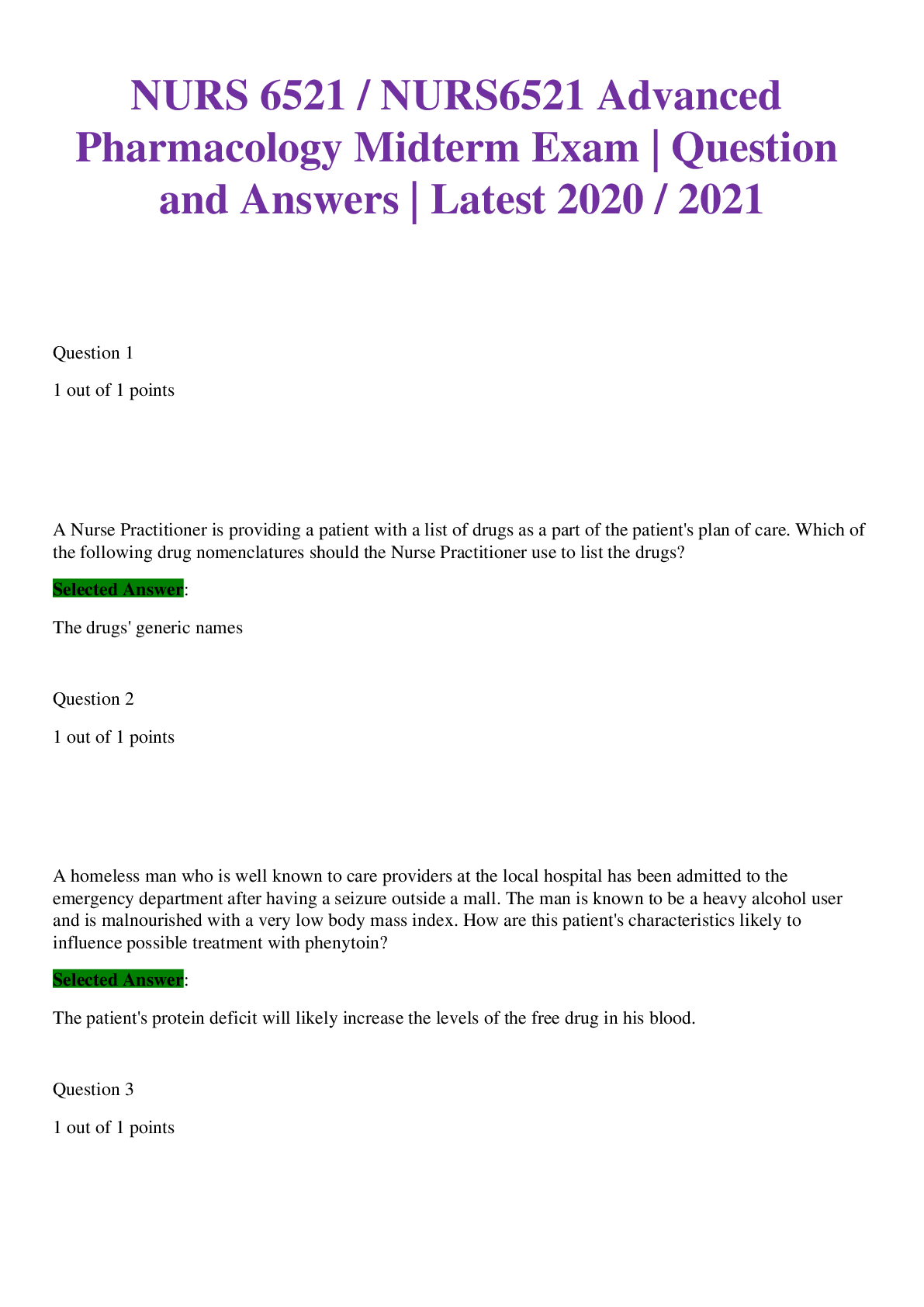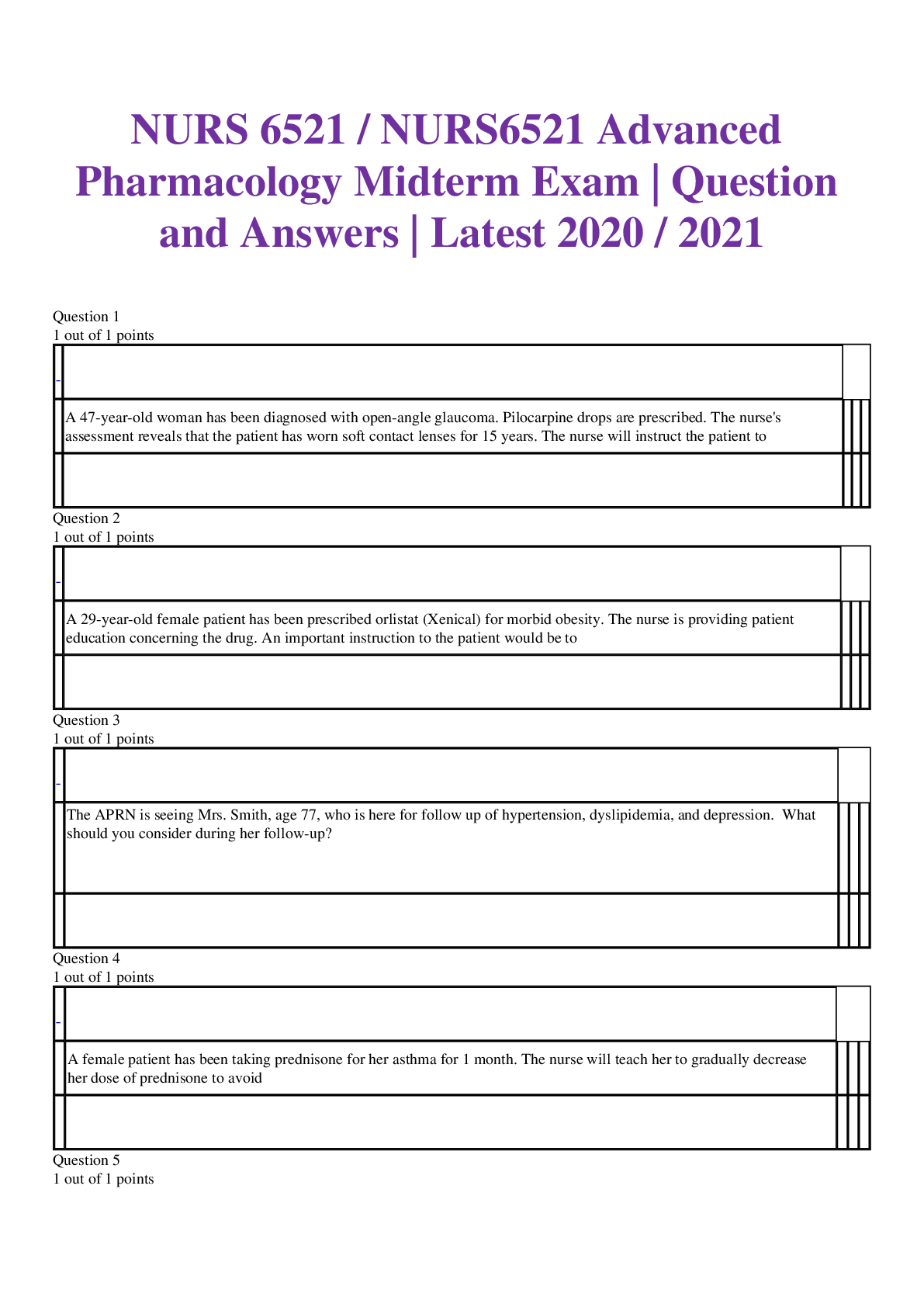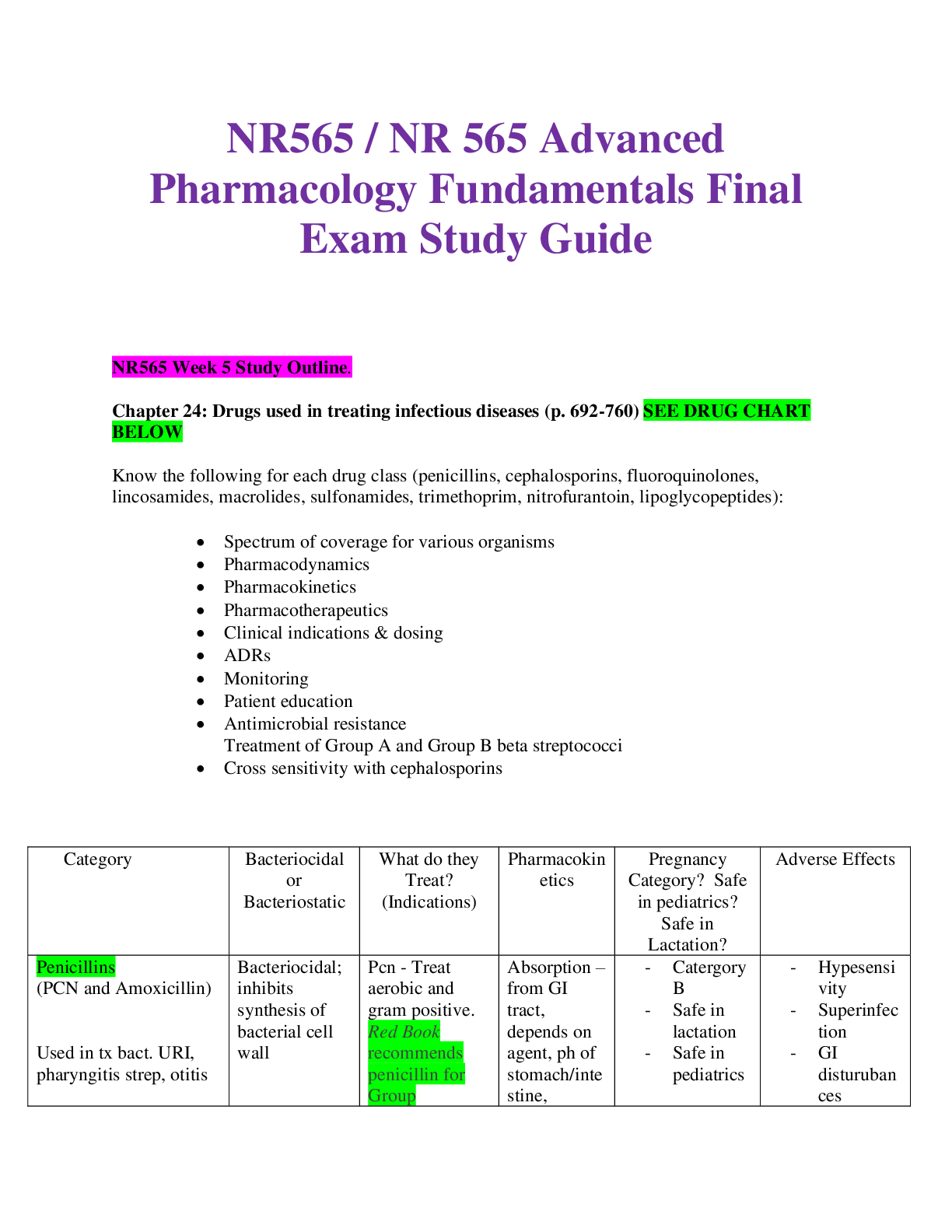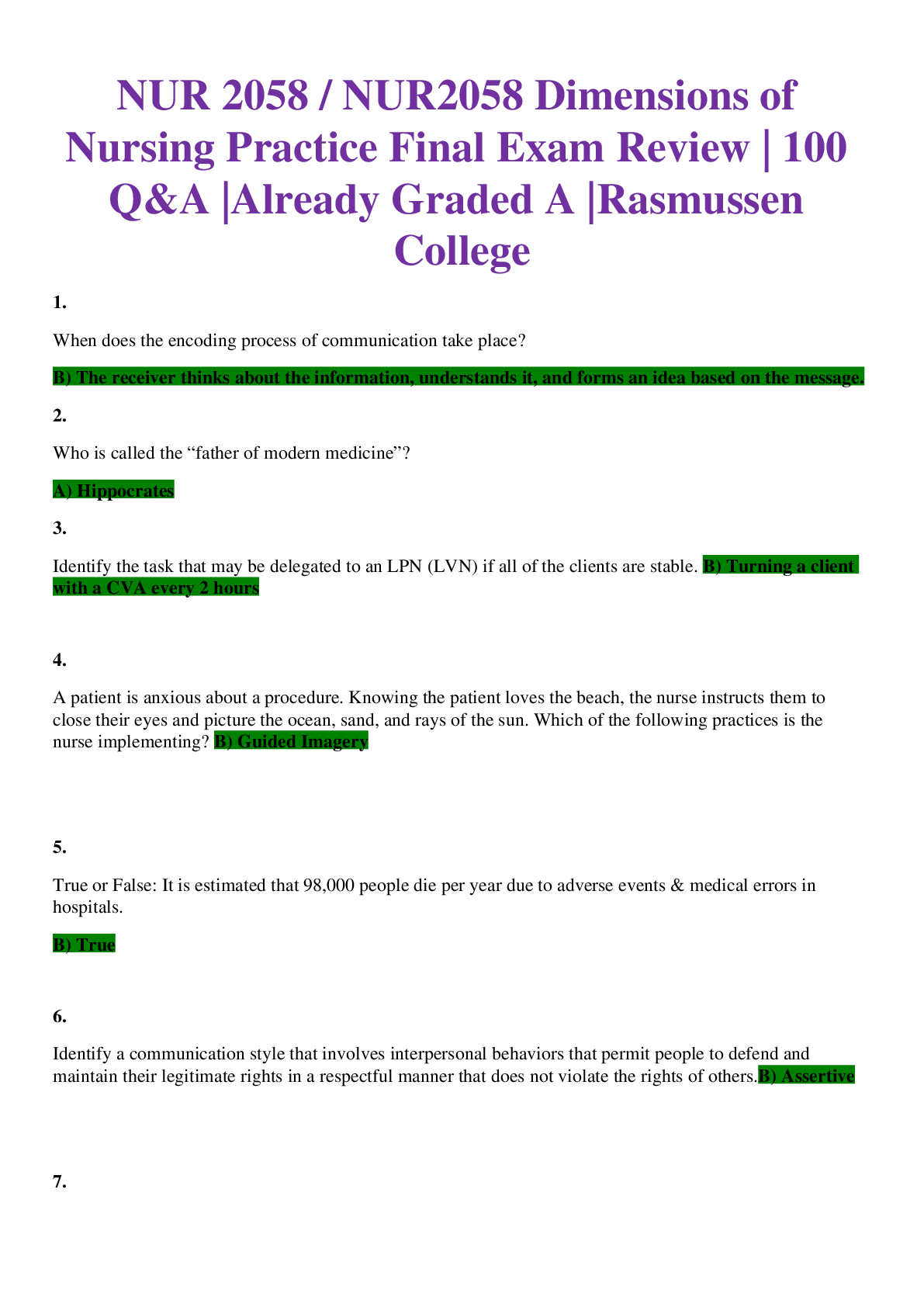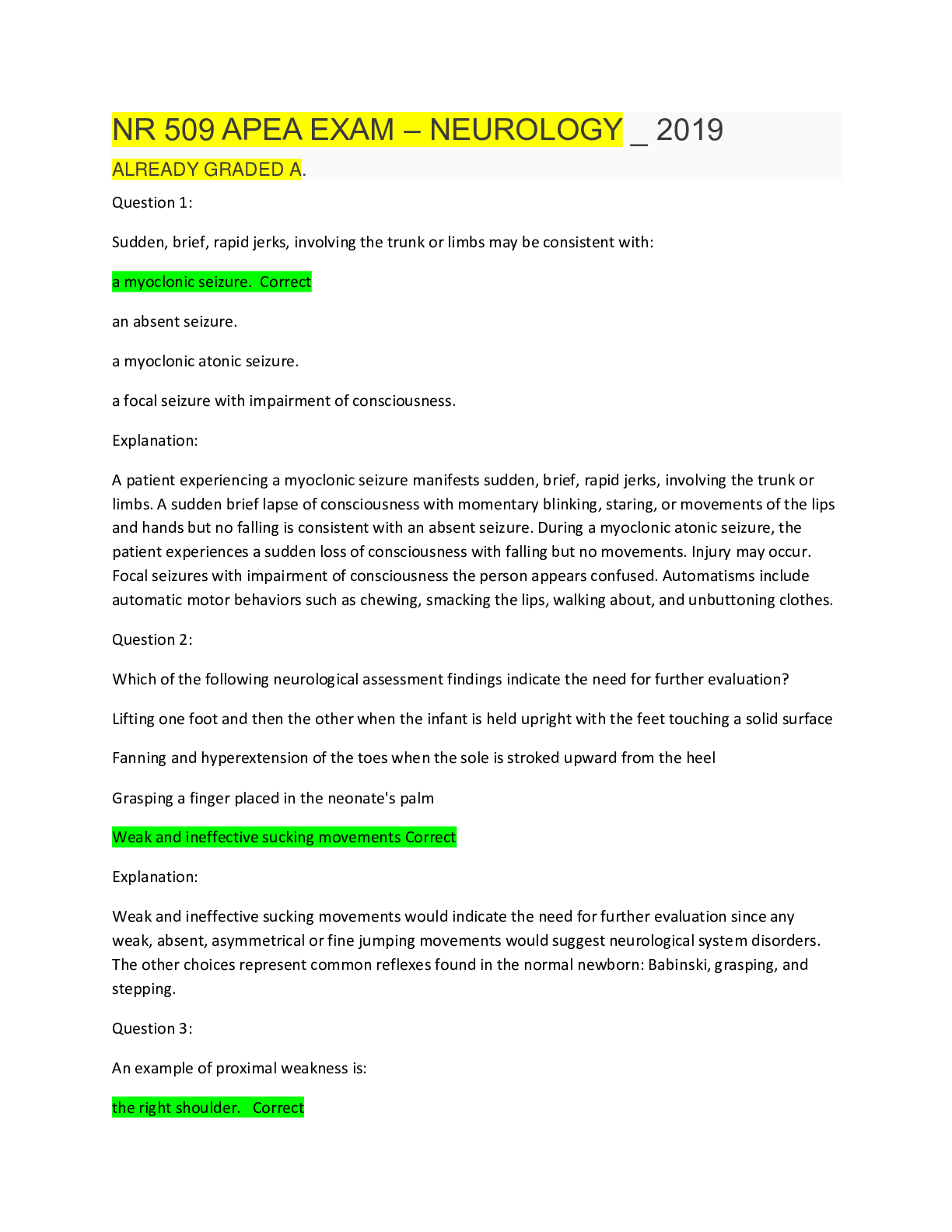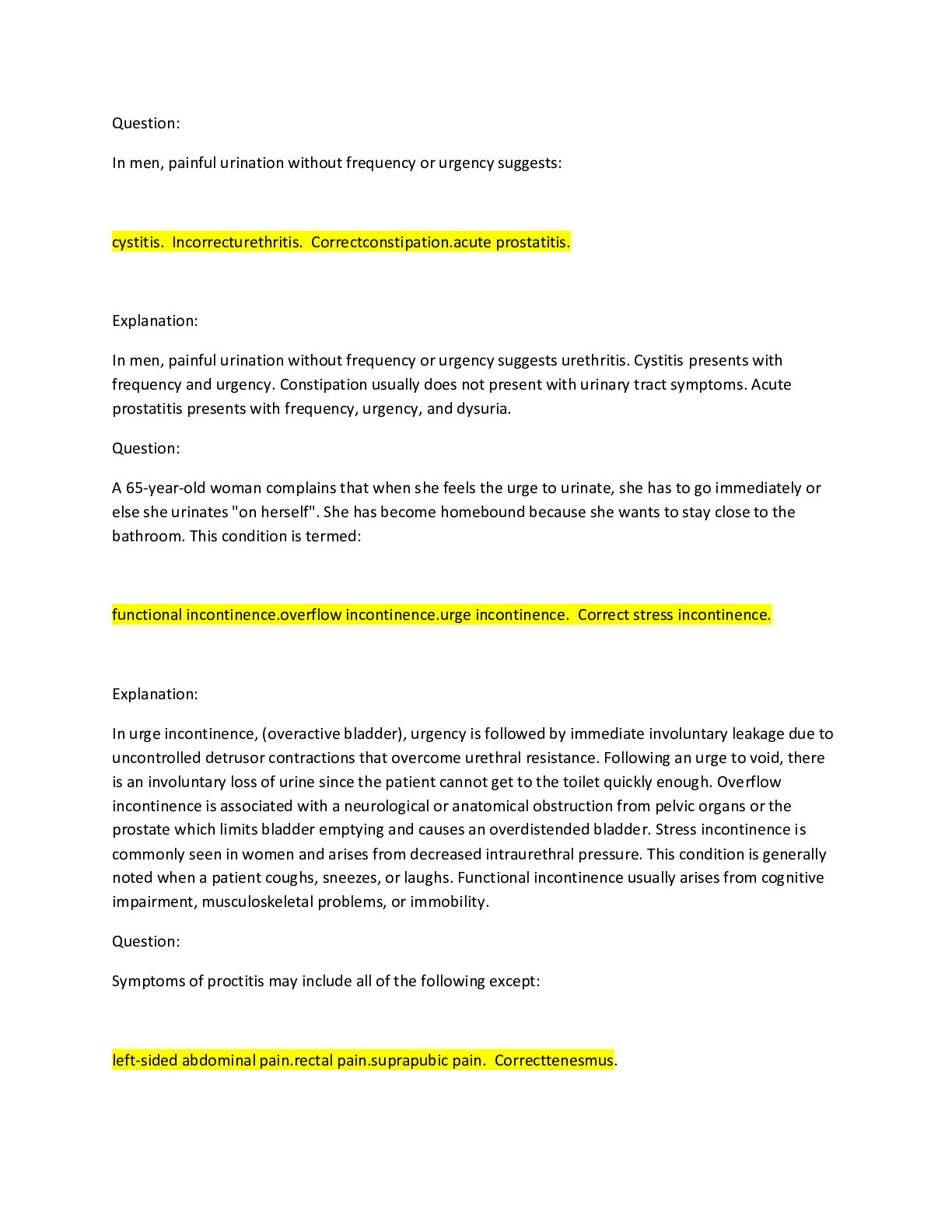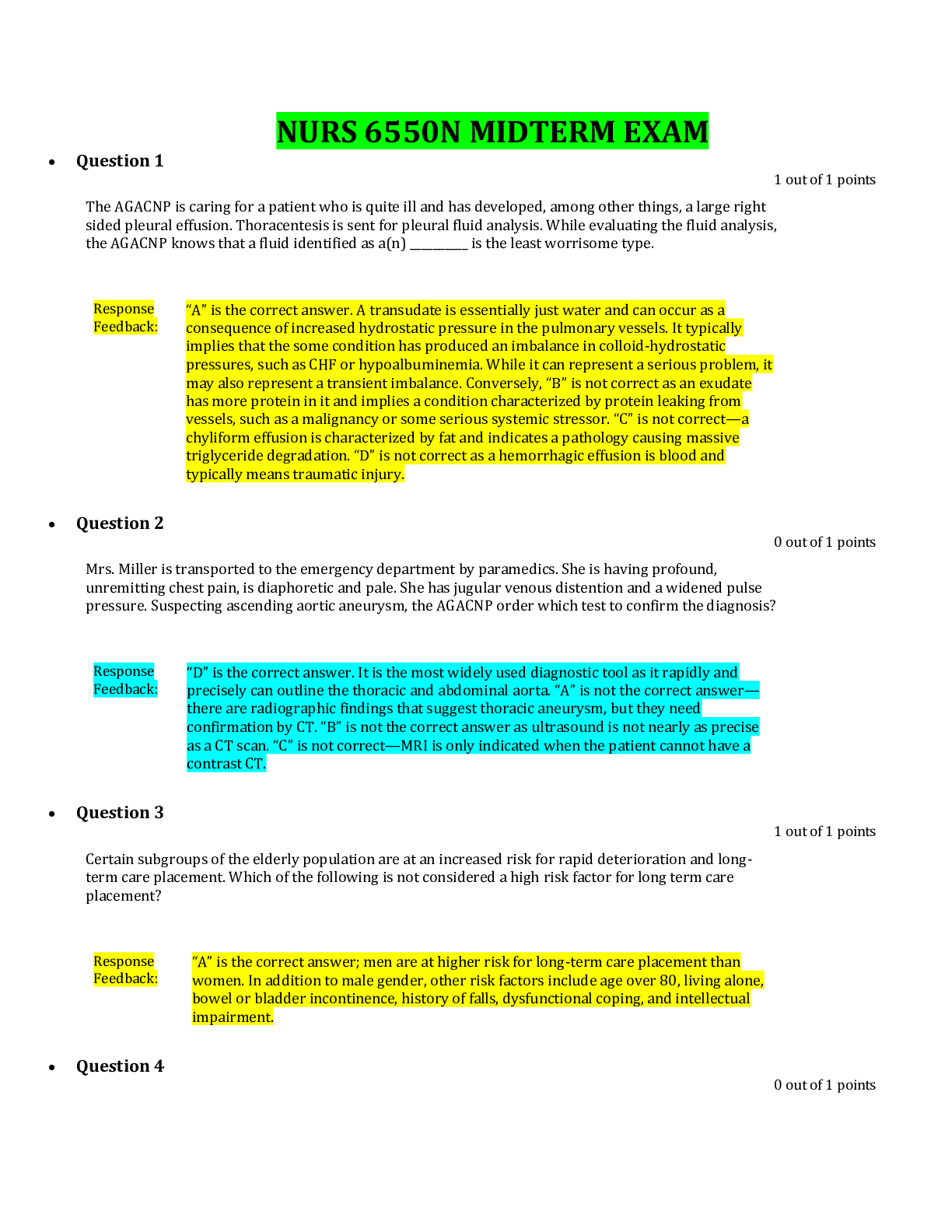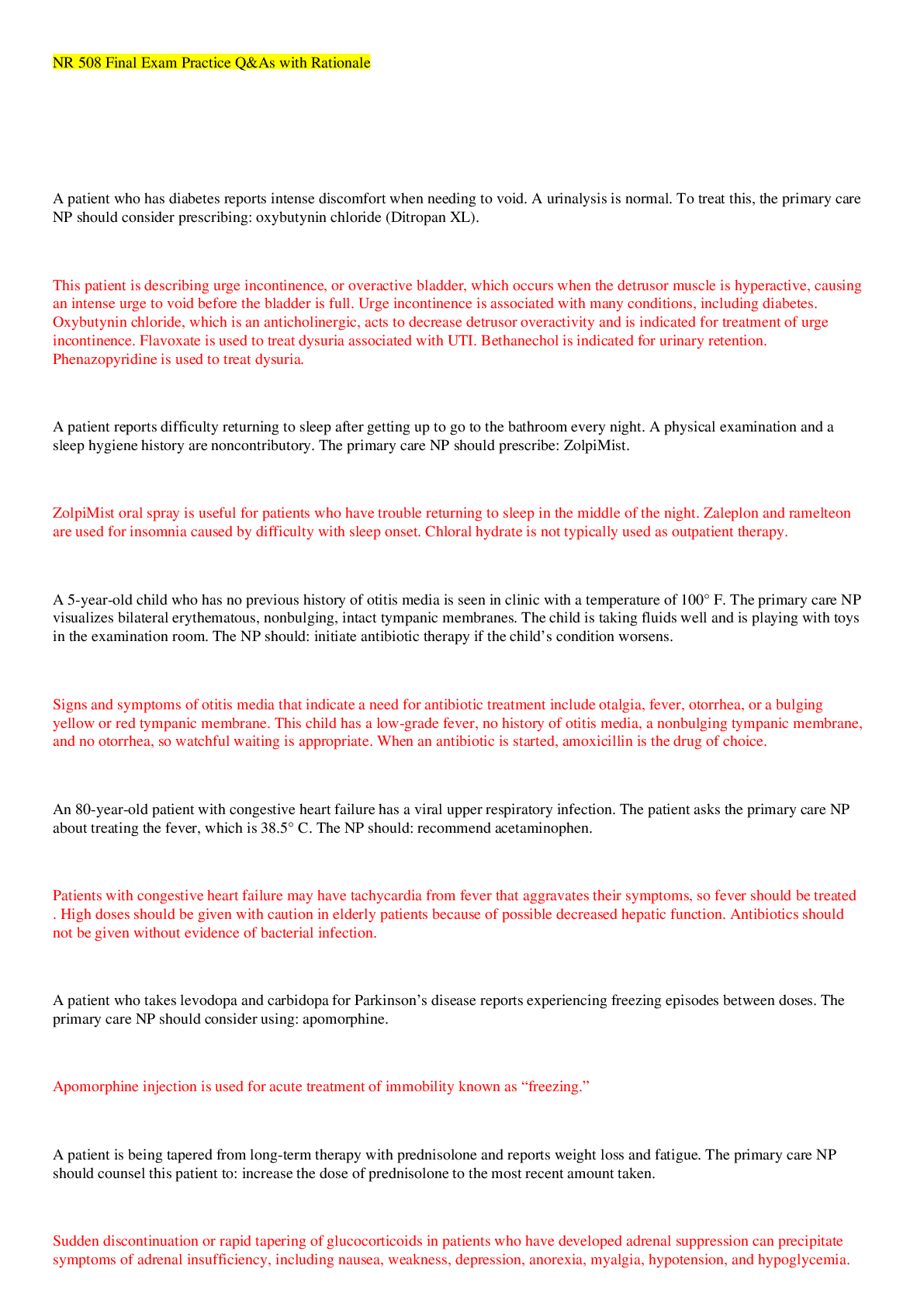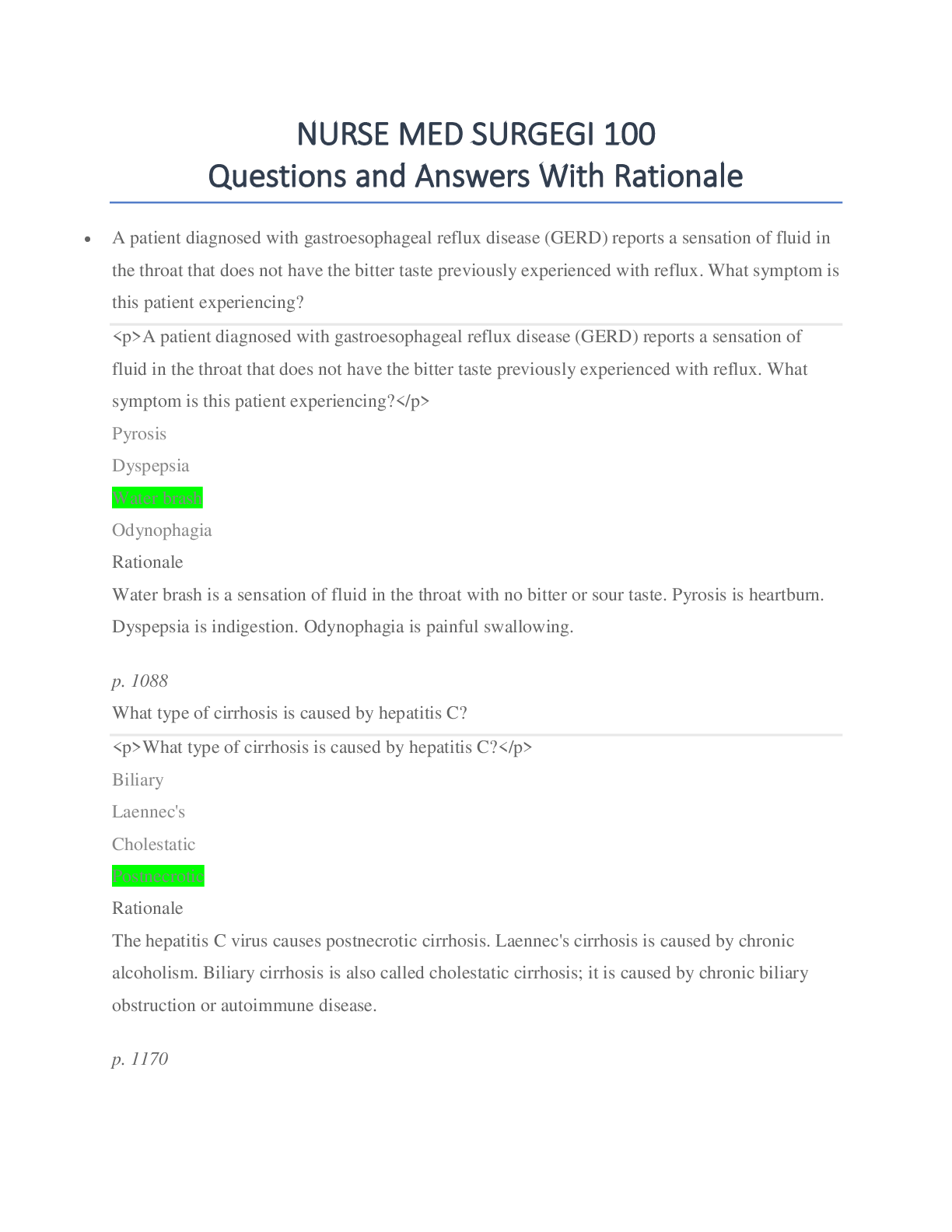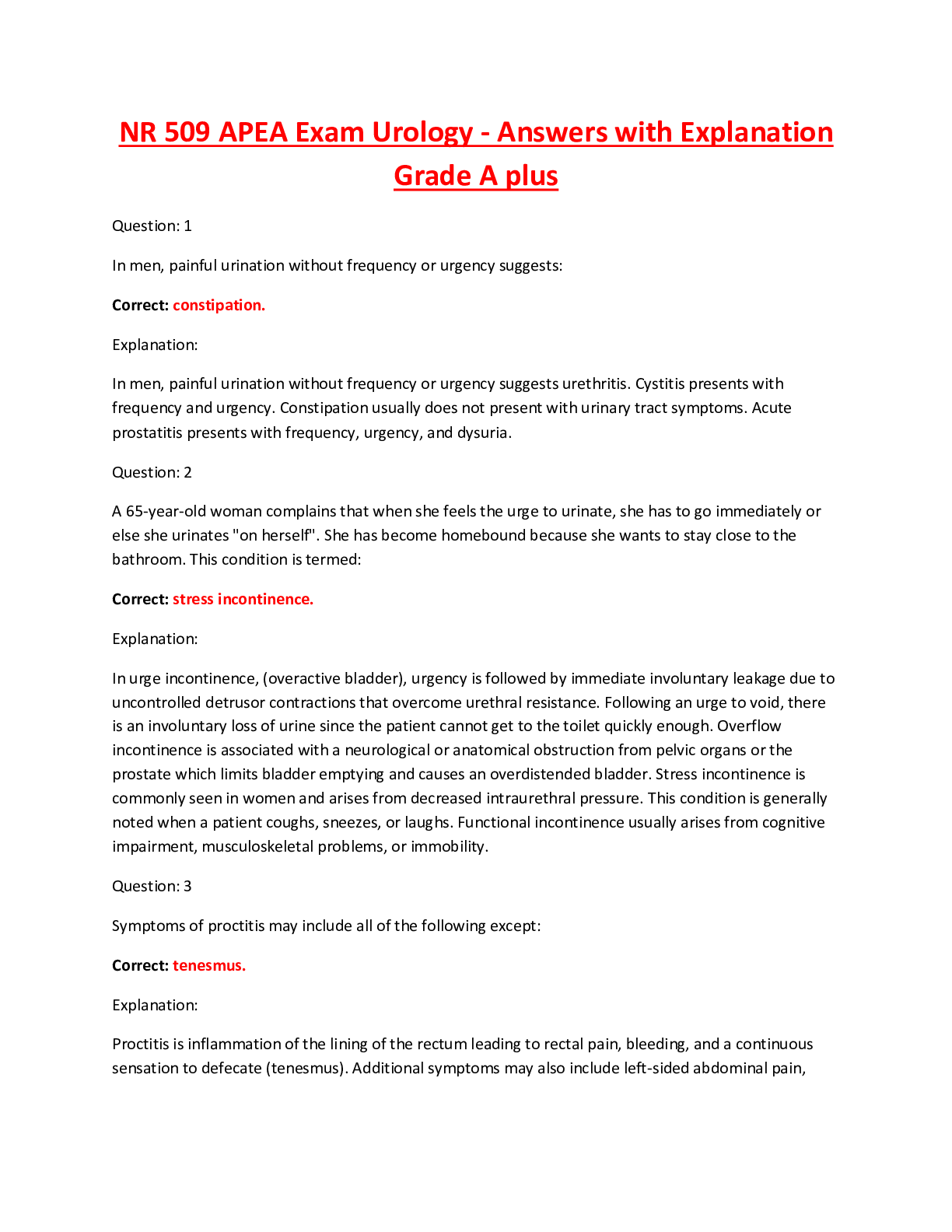*NURSING > EXAM > NSG 6020 / NSG6020 Final Exam | Questions and Answers with Rationales | South University (All)
NSG 6020 / NSG6020 Final Exam | Questions and Answers with Rationales | South University
Document Content and Description Below
NSG 6020 / NSG6020 Final Exam | Questions and Answers with Rationales | South University A pregnant woman who has breast implants asks the nurse if she can still breastfeed. What is the nurse's best ... response? A. "You should not have any problems breast feeding because your implants do not affect milk production." B. "When the breast implants are inserted they usually affect the milk glands, and breastfeeding is not possible." C. "This would depend on which type of implants were placed and which procedure was used by the surgeon. Check with your surgeon to see if your milk production will be affected." C Milk production may vary depending on the procedure. Many women can still breastfeed after breast augmentation. The surgeon would be able to determine this ability. Answers 1 and 2 are incorrect because they may not be true. Only the surgeon can determine if milk production will be affected. Statement by the patient would indicate a need for further teaching? A. "The best time to check my breasts is a week before my cycle." B. "I will check my breasts in the shower one week after my cycle." C. "I will exam my breast in a clock-like sequence so that I don't miss any surface area." D. "I will be sure to check my arm pits." A The week before a woman's cycle is not the best time to check for lumps because the breasts become sore and tender and may also be "lumpy" a week prior to the cycle. Answer 2 is incorrect because the week after a woman's cycle is the best time to do the examination, and the shower allows for ease of palpation. Answer 3 in incorrect because a clock-like sequence is the proper way to perform a BSE. Answer 4 is incorrect because under the arms houses lymph nodes and the axillary tail of Spence, which is a common site for breast cancer. Which of the following statements is true regarding the internal structures of the breast? The breast is: A)mainly muscle, with very little fibrous tissue. B)composed of fibrous, glandular, and adipose tissue. C)composed mostly of milk ducts, known as lactiferous ducts. D)composed of glandular tissue, which supports the breast by attaching to the chest wall. ANS: B The breast is composed of glandular tissue, fibrous tissue (including the suspensory ligaments), and adipose tissue. In performing a breast examination, the nurse knows that it is especially important to examine the upper outer quadrant of the breast. The reason for this is that the upper outer quadrant is: A)the largest quadrant of the breast. B)the location of most breast tumors. C)where most of the suspensory ligaments attach. D)more prone to injury and calcifications than other locations in the breast. ANS: B The upper outer quadrant is the site of most breast tumors. In the upper outer quadrant, the nurse should notice the axillary tail of Spence, the cone-shaped breast tissue that projects up into the axilla, close to the pectoral group of axillary lymph nodes. In performing an assessment of a woman's axillary lymph system, the nurse should assess which of these nodes? A)Central, axillary, lateral, and sternal nodes B)Pectoral, lateral, anterior, and sternal nodes C)Central, lateral, pectoral, and subscapular nodes D)Lateral, pectoral, axillary, and suprascapular nodes ANS: C The breast has extensive lymphatic drainage. Four groups of axillary nodes are present: (1) central, (2) pectoral (anterior), (3) subscapular (posterior), and (4) lateral. If a patient reports a recent breast infection, then the nurse should expect to find _____ node enlargement. A)nonspecific B)ipsilateral axillary C)contralateral axillary D)inguinal and cervical ANS: B The breast has extensive lymphatic drainage. Most of the lymph, more than 75%, drains into the ipsilateral, or same side, axillary nodes. A 9-year-old girl is in the clinic for a sports physical. After some initial shyness she finally asks, "Am I normal? I don't seem to need a bra yet, but I have some friends who do. What if I never get breasts?" The nurse's best response would be: A)"Don't worry, you still have plenty of time to develop." B)"I know just how you feel, I was a late bloomer myself. Just be patient and they will grow." C)"You will probably get your periods before you notice any significant growth in your breasts." D)"I understand that it is hard to feel different from your friends. Breasts usually develop between 8 and 10 years of age." ANS: D Adolescent breast development usually begins between 8 and 10 years of age. The nurse should not belittle the girl's feelings by using statements like "don't worry" or by sharing personal experiences. The beginning of breast development precedes menarche by about 2 years. A patient contacts the office and tells the nurse that she is worried about her 10-year-old daughter having breast cancer. She describes a unilateral enlargement of the right breast with associated tenderness. She is worried because the left breast is not enlarged. What would be the nurse's best response? A)Tell the mother that breast development is usually fairly symmetric and she should be examined right away. B)Tell the mother that she should bring her daughter in right away because breast cancer is fairly common in preadolescent girls. C)Tell the mother that, although an examination of her daughter would rule out a problem, it is most likely normal breast development. D)Tell the mother that it is unusual for breasts that are first developing to feel tender because they haven't developed much fibrous tissue. ANS: C Occasionally one breast may grow faster than the other, producing a temporary asymmetry. This may cause some distress; reassurance is necessary. Tenderness is common also. A 14-year-old girl is anxious about not having reached menarche. When taking the history, the nurse should ascertain which of the following? The age: A)she began to develop breasts B)her mother developed breasts C)she began to develop pubic hair D)she began to develop axillary hair. ANS: A Full development from stage 2 to stage 5 takes an average of 3 years, although the range is 1.5 to 6 years. Pubic hair develops during this time, and axillary hair appears 2 years after the onset of pubic hair. The beginning of breast development precedes menarche by about 2 years. Menarche occurs in breast development stage 3 or 4, usually just after the peak of the adolescent growth spurt, which occurs around age 12 years. See Figure 17-6. [Show More]
Last updated: 1 year ago
Preview 1 out of 37 pages
Instant download
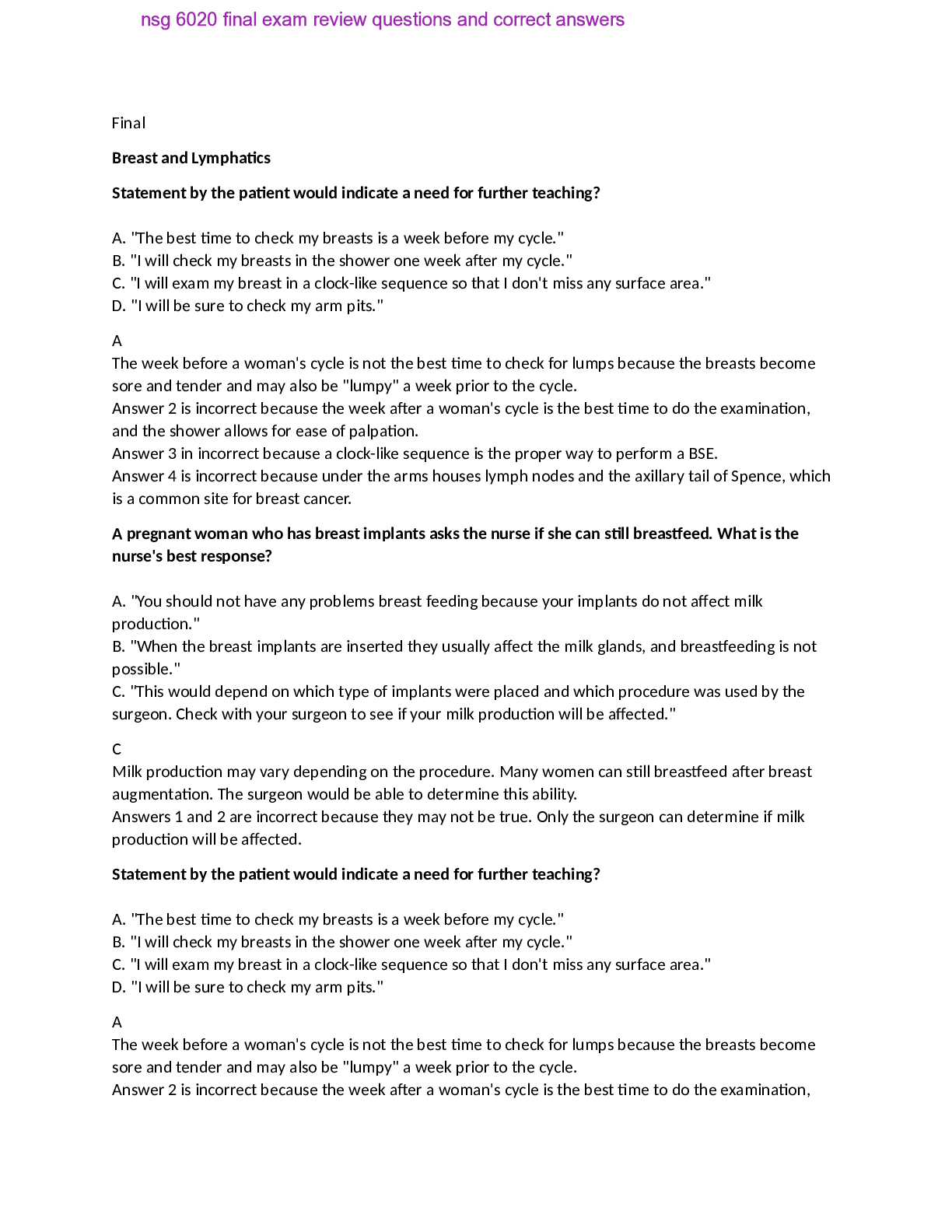
Buy this document to get the full access instantly
Instant Download Access after purchase
Add to cartInstant download
Reviews( 0 )
Document information
Connected school, study & course
About the document
Uploaded On
Dec 04, 2020
Number of pages
37
Written in
Additional information
This document has been written for:
Uploaded
Dec 04, 2020
Downloads
0
Views
39

